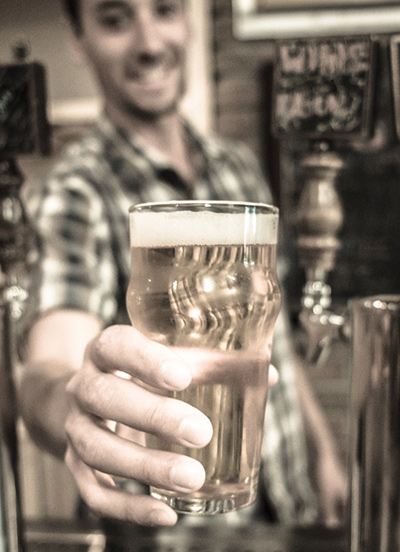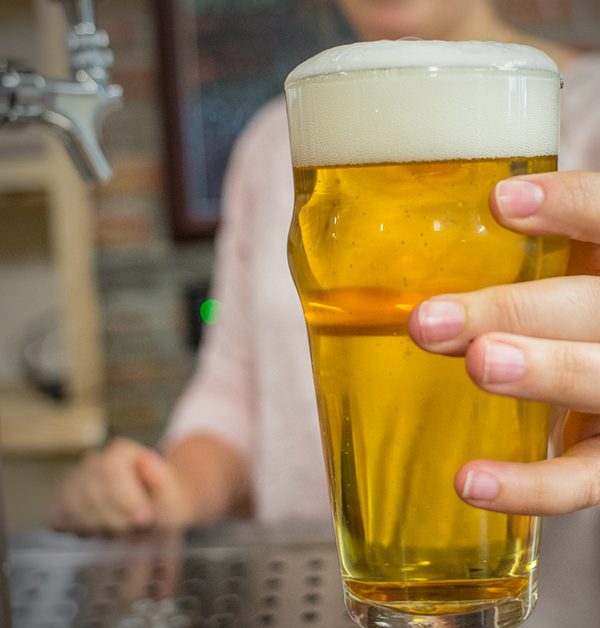I’m not an expert on revolutions, but it seems to me that to spark a revolution these days one needs three things:
- A cause or idea to fight for.
- An enemy or opposition to said cause.
- A series of bumper sticker-quality rallying cries that galvanize supporters and draw the line against the opposition.
Craft Beer Is a Revolution
Craft beer is a cause that I vehemently fight for. However, like many revolutionaries, in our haste to gain supporters we can easily lose sight of what is actually important. When ideals are confused, it’s not only easy to muddle what you are fighting for, but who or what you revolted against in the first place.
So what is the core ideal of the craft beer revolution? It’s the idea that beer lovers should have the freedom to make their own purchasing decisions, from the largest variety of beers available, with as much information as possible about the companies who make the beer.
The revolution is not about subjective judgements of the superiority of one beer over another. It’s not necessarily a fight against big business, or restrictive laws, or fizzy, yellow beer—though those ideas make great bumper stickers and tweets. Yet it seems like the fight against fizzy, yellow beer is what resonates and gains traction, especially with new supporters of craft beer. They are led to believe that those beers are the enemy.
Fizzy, yellow beer is not your enemy.
The craft beer revolution is far greater and more complex than color and carbonation. As we invite new appreciators into the craft beer resistance, we must separate the symbolism of “fizzy, yellow beer” from the reality of beers that happen to be yellow and fizzy like pilseners and cream ales.
Five Fizzy, Yellow Beers You Should Be Drinking
 It isn’t hard to see that stouts and IPAs are different from traditional fizzy, yellow beer. What’s difficult is recognizing the less obvious qualities of lighter, more subtle examples of craft beer. What these beers lack in color, they make up for in flavor, food compatibility and thirst-quenching drinkability.
It isn’t hard to see that stouts and IPAs are different from traditional fizzy, yellow beer. What’s difficult is recognizing the less obvious qualities of lighter, more subtle examples of craft beer. What these beers lack in color, they make up for in flavor, food compatibility and thirst-quenching drinkability.
Don’t be afraid to be loud and proud about these so-called “fizzy, yellow beers.” Viva la revolución!
German- Style Helles
German for “light,” helles are a great introduction to craft beer for someone who is used to premium light lagers. Pleasant grainy notes reminiscent of freshly-baked bread are the focus. These beers are also extremely compatible with food. I’ve had wonderful pairings with everything from salads and seafood to a mango-infused stilton with duck confit. Don’t be afraid of the light.
Examples
- Helles Festbier | Hoppers Grill & Brewing Co.Opens in new window | Midvale, UT
- Rahr’s Blonde | Rahr & Sons Brewing Co.Opens in new window | Fort Worth, TX
- Session Premium Lager | Full Sail Brewing Co.Opens in new window | Hood River, OR
- Summer Helles | New Belgium Brewing Co.Opens in new window | Fort Collins, CO
Pilsener
While we’re tearing down the oppressive walls of beer stereotypes, I’d like to mention that if you pledge allegiance to hoppy beers, you’d be quite the turncoat to deny yourself the original hoppy style—the noble pilsener. These beers are simple, flavorful and refreshing. This time of year, I love a pilsener with grilled clams drizzled with Sriracha and butter.
Examples
- Gold Leaf Lager | Devils Backbone Brewing Co.Opens in new window | Roseland, VA
- Pils | Stoudt’s Brewing CompanyOpens in new window | Adamstown, PA
- Pivo Firestone Walker Brewing Co.Opens in new window | Paso Robles, CA
- Tiny Bomb | Wiseacre BrewingOpens in new window | Memphis, TN
American Cream Ale
Cream ales are light and refreshing, typically with a high level of carbonation (aka “fizzy”). Born of revolutionary ingenuity and innovation, the BJCP Style Guidelines describe Cream Ale as “an ale version of the American lager style. Produced by ale brewers to compete with lager brewers in the Northeast and Mid-Atlantic States.”
Examples
- Cream Ale | Newburgh Brewing Co.Opens in new window | Newburgh, NY
- Hardywood Cream Ale | Hardywood Park Craft BreweryOpens in new window | Richmond, VA
- Kiwanda Cream Ale | Pelican Brewing Co.Opens in new window | Pacific City, OR
- Summer Solstice | Anderson Valley Brewing Co.Opens in new window | Boonville, CA
German-style Berliner Weisse
This Berliner-style weisse is a light and fizzy and about as far away from mass-produced beer as you could imagine. So much so that even the most ardent anti-establishment craft revolutionist might need to sweeten it a bit with a fruit or herb-based syrup to take off the bracingly tart edge—and that’s okay.
Examples
- Berliner Weisse | Crabtree Brewing Co.Opens in new window | Greeley, CO
- Hottenroth Berliner Weisse | The BrueryOpens in new window | Placentia, CA
- Ich Bin Ein Berliner Weisse | Nodding Head Brewery & RestaurantOpens in new window | Philadelphia, PA
Belgian-style Lambic \ Gueuze
It would be a shame to not give a fruity and sour gueuze-style beer the time of day just because of its color! Lambic and Gueuze beers have aromas and flavors often described as “horse blanket,” “barnyard” and “leather”—but don’t let those funny adjectives scare you away. The presence of Brettanomyces yeast lends some interesting characteristics that shouldn’t be missed.
Examples
- Atrial Rubicite | Jester King BreweryOpens in new window | Austin, TX
- Le Serpent | Snake River Brewing Co.Opens in new window | Jackson, WY
- Resurgam | Allagash Brewing CompanyOpens in new window | Portland, ME
- Sour Reserve | Upland Brewing Co.Opens in new window | Bloomington, IN
Distilling the craft beer revolution down to quibbles over color and carbonation does a disservice to the amazing beverage of beer, and to America’s small and independent brewers. It is the open-minded and eager who will proudly pour a pils, raise some helles in a raucous toast, or take the leap to crack open a gueuze—a beer that we might not have access to (other than imported versions) were it not for the craft beer revolution.
So don’t let a catchy phrase or bumper sticker derail your judgment. Arm yourself with knowledge and don’t fear fizzy, yellow beer!
CraftBeer.com is fully dedicated to small and independent U.S. breweries. We are published by the Brewers Association, the not-for-profit trade group dedicated to promoting and protecting America’s small and independent craft brewers. Stories and opinions shared on CraftBeer.com do not imply endorsement by or positions taken by the Brewers Association or its members.


Share Post